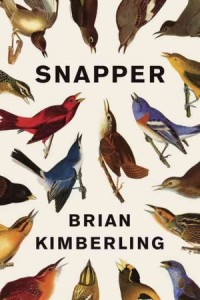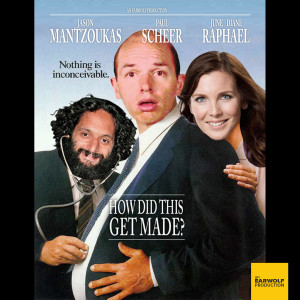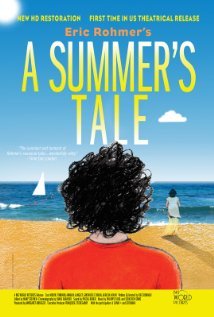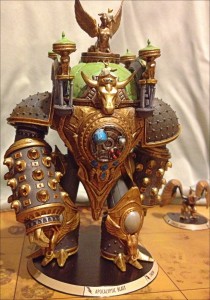We here at The Addison Recorder read stuff. We also watch stuff. And play stuff, even. Sometimes, that stuff is interesting. Sometimes we just need to talk about whatever pop culture ephemera occupies our time. Which brings us to this column. Party on.
Travis
 On impulse, I picked up a pile of new reading at Unabridged Books in Chicago, because I can never have enough reading for my CTA commutes. This month, my blind-reading pick-up was the novel Snapper by Brian Kimberling. His debut novel draws heavily from his own experiences as he tells the story of Nathan Lochmueller, a songbird field researcher in southern Indiana. As a southern Ohio farm boy, there’s a lot of things within that culture I relate strongly to, so it seemed like it would be a nostalgic read of sorts at the least. What I got was an interesting study that portrays the struggle of Nathan, his friends and family, and of the state itself, to find their place in the world where life doesn’t always give us what we want.
On impulse, I picked up a pile of new reading at Unabridged Books in Chicago, because I can never have enough reading for my CTA commutes. This month, my blind-reading pick-up was the novel Snapper by Brian Kimberling. His debut novel draws heavily from his own experiences as he tells the story of Nathan Lochmueller, a songbird field researcher in southern Indiana. As a southern Ohio farm boy, there’s a lot of things within that culture I relate strongly to, so it seemed like it would be a nostalgic read of sorts at the least. What I got was an interesting study that portrays the struggle of Nathan, his friends and family, and of the state itself, to find their place in the world where life doesn’t always give us what we want.
The novel jumps around chronologically, not really telling a classic three-act story. One chapter deals with an incident from Nathan’s childhood involving a captured snapping turtle, a paddle boat, and a severed thumb. Another talks about a dog who sings back-up vocals to classic ’50s doo-wop. As the tale progresses, several characters make appearances, with the most common being Nathan’s unrequited love, Lola. Throughout it all, Nathan circles, a silent observer much of the time, resolute yet as fragile as the tiny songbirds he continually warbles about (pun intended). One of NPR’s Best Books of 2013, it’s a fantastic read (and a quick one, clocking in at just over 200 pages). For anyone who grew up in the Midwest, it’s a fantastic portrait of a place that feels just a little bit like home.
-J.
August for me was about attending Gen Con, preparing for Gen Con, and recovering from Gen Con. Not surprisingly, my “one thing” is game-related. In my recap of Gen Con 2014, I picked my favorite game of the con as the gorgeous new Bruno Cathala board game, Abyss, followed closely by the light civ-building board game Hyperborea. But another game that has me cheering like a live PAX crowd when Gabe rolls a natural 20 is… Golem Arcana.
Golem Arcana is a game that combines miniatures and tabletop wargaming with the digital aspects of video games. Instead of needing rulebooks with army lists, and poring through tables and stats, the game’s free app for smartphones & tablets holds all the information in an easy-to-use format. Everything in the game — the map tiles, the giant golem constructs, the knights, the relics — use digital assets to track this data. The players use a bluetooth stylus to do all the calculations. You want to charge your Devil Djinn into your opponent’s Plague Carrier? A few taps with the stylus on the models & map, and the digital components do the work for you, calculating the points costs and percentage to hit. This frees you up to answer the important questions. like: should use the Crush attack, or hit it with Liquid Fire?
Bean

I bought it based on the cover art. Can you blame me? (Image via.)
I spent August diving back into Westerns. Again. I read two books within that august genre, the novella Far Bright Star by Robert Olmstead and the history book Blood and Thunder: An Epic of the American West by Hampton Sides. The former is a taught and harrowing narrative about an aging U.S. Cavalry officer deployed to Mexico in pursuit of Pancho Villa. He leads a five-man scouting party out on a one-day mission, but is trapped by a mysterious Mexican warrior clan. Their battle and its grisly aftermath are a grim affair, which is well-suited to Olmstead’s terse and beautiful prose. He works in the tradition of Eugene Hemingway and Cormac McCarthy, which lends the story a alternating dreadful tension and distant sense of wonder.
Blood and Thunder is about the gigantic life of Kit Carson, a Western trapper, scout, and soldier whose real adventures actually live up to his myths from the blood and thunder dime novels that lend the book its name. Born to settlers in Missouri, Carson traveled to the Western frontier at such an early age that it was still split between Mexico, Great Britain, and the United States. His many travels took him to every corner of the country and lead to many scrapes with Whites and Indians alike. He guided John C. Fremont’s exploratory missions that mapped the routes West and was a key leader for the U.S. in the Mexican-American War and many wars with Indians. The book focuses especially on his role in the punitive expedition against the Navajo nations and their subsequent Long March to the Bosque Redondo reservation. It’s gripping stuff, and amazingly it’s all true.
Meryl

“HEAT” came out in 2012. (Image via)
I’ve been working my way through Twin Peaks and listening to a lovely 2012 album, HEAT, by Lucy Michelle and the Velvet Lapelles. The two have little in common, save a reverence for the beauty of the Pacific Northwest. Lucy Michelle’s gorgeous “Puget Sound” is my highlight of the album, but the wrenching “Oh Home” makes me tear up every time.
Speaking of the Pacific Northwest, I have Portland on the brain, since I’ll be traveling there for a few days in early October. I’ll also be driving up to Seattle at the end of my trip to see a former Chicagoan (but Washington state native). I see lots of Portlandia episodes and Death Cab for Cutie in my pop culture future as I mentally prepare for a solo vacation filled with coffee, fancy donuts, biking, and writing. Happy (almost) fall, everyone!
Chris
 Movies can be works of art — gripping, suspenseful, profound, deeply emotional experiences that stir within you, unlocking insights into humanity that you can’t wait to share. But not all movies. Comedians Paul Scheer, June Diane Raphael, and Jason Mantzoukas tackle the latter in the Earwolf podcast How Did This Get Made? Those three (and a guest) watch terrible movies and then rant, rave, and try to make sense of them. Bean hooked me on it with the Winter’s Tale episode. Oh, that movie…. BE WARNED: This podcast will make you want to watch terrible, terrible movies. I suggest doing so with friends. And alcohol.
Movies can be works of art — gripping, suspenseful, profound, deeply emotional experiences that stir within you, unlocking insights into humanity that you can’t wait to share. But not all movies. Comedians Paul Scheer, June Diane Raphael, and Jason Mantzoukas tackle the latter in the Earwolf podcast How Did This Get Made? Those three (and a guest) watch terrible movies and then rant, rave, and try to make sense of them. Bean hooked me on it with the Winter’s Tale episode. Oh, that movie…. BE WARNED: This podcast will make you want to watch terrible, terrible movies. I suggest doing so with friends. And alcohol.
Andrew
 The late Eric Rohmer is one of my favorite filmmakers of all time. One of the geniuses of the French New Wave, he specialized in intimate, powerful films about human relationships and connections, marked by immaculate cinematography and editing, realistic and witty dialogue, and great acting. Richard Linklater’s Before trilogy and the mumblecore movement are heavily indebted to Rohmer.
The late Eric Rohmer is one of my favorite filmmakers of all time. One of the geniuses of the French New Wave, he specialized in intimate, powerful films about human relationships and connections, marked by immaculate cinematography and editing, realistic and witty dialogue, and great acting. Richard Linklater’s Before trilogy and the mumblecore movement are heavily indebted to Rohmer.
The Gene Siskel Film Center gave fans like me a treat by showing his 1996 movie A Summer’s Tale as part of its first American theatrical release. The tale concerns a young man out of college who travels to the coast of Brittany to meet his sort-of girlfriend before starting a new job, and ends up entangled with three women altogether. It sounds like a perfect Hollywood romantic comedy full of youthful energy — all the more remarkable considering Rohmer was 76 during production — but it also possesses intelligent and unusual touches. Rohmer utilizes long, conversational takes which cut on emotional shifts, subtly creates three different personas and speaking styles for his protagonist in the young man’s interactions with the three women, and builds the tension until the climax comes only five minutes from the end. Above all, A Summer’s Tale captures the tone of being in your twenties, of life being full of possibilities, and love coming unexpectedly. For those unfamiliar with Rohmer, it’s a perfect introduction.






